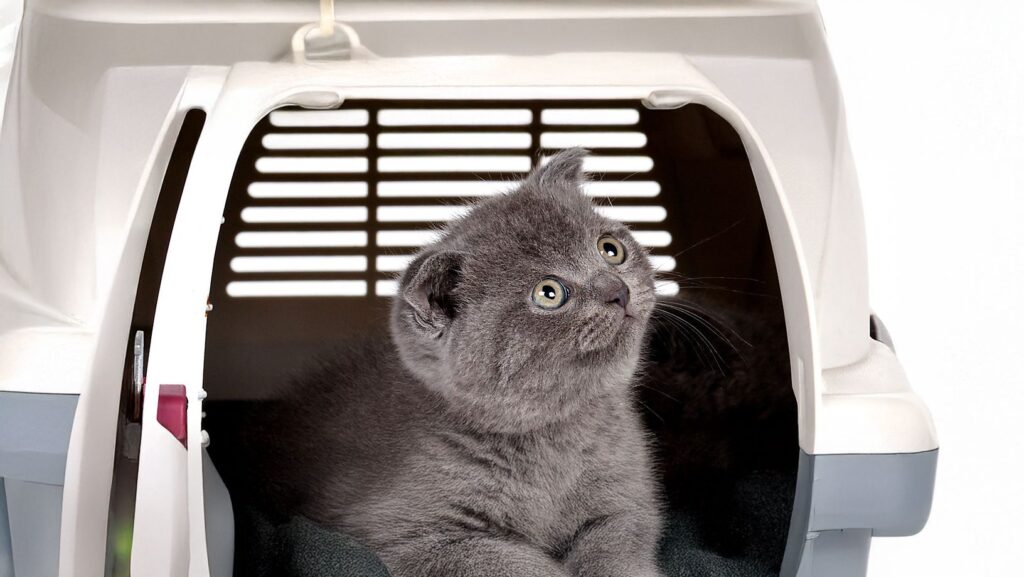
That Familiar, Heart-Wrenching Question
Have you ever been there? You’re standing on a balcony in a new city, watching the sun dip below the horizon, painting the sky in shades of orange and pink. It’s a perfect moment, but there’s a quiet little ache in your heart. You find yourself thinking, “I wish my cat could see this.” Or maybe you’ve been faced with a life-changing opportunity—a new job, a new love, a new life in a different country—and the first, most terrifying thought that comes to mind is, “But what about the cat?”
The idea of traveling with a cat, especially on a long journey like a flight, can seem completely overwhelming. Cats are creatures of comfort, tiny masters of their own familiar territories. They are not, by nature, globetrotting adventurers. But leaving them behind is often an unthinkable, heartbreaking alternative.
The good news is that with careful planning, a lot of patience, and a deep understanding of your feline friend, traveling with your cat is not just possible; it can be an incredibly rewarding experience. I know because I’ve done it, and while the journey was stressful, the reward of having my best friends with me at our new destination was worth every single moment of anxiety.
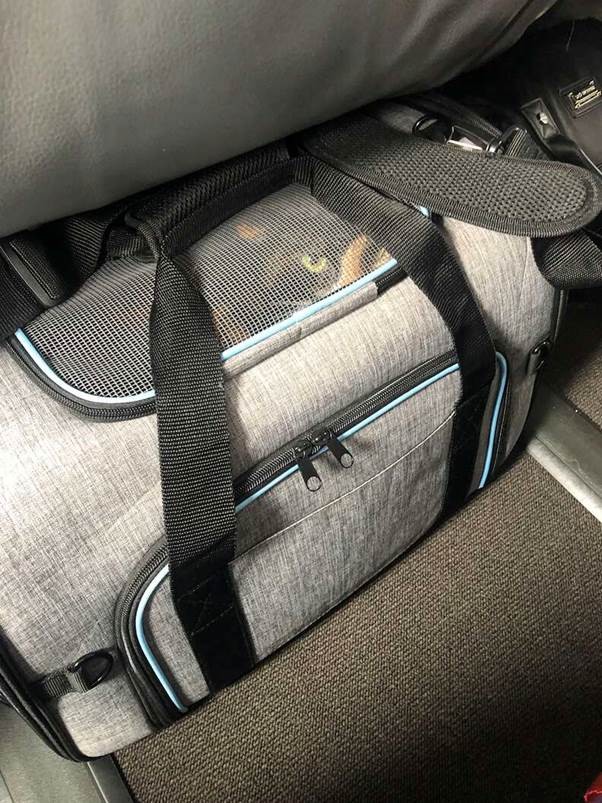
Your First Stop: A Conversation with Your Vet
Before you book a single ticket or pack a single bag, your first and most important stop is your veterinarian’s office. This is the foundational step that ensures everything that follows is done safely and responsibly. Your vet will be your trusted partner in this adventure, helping you navigate the medical side of your cat’s journey. They will make sure your kitty is medically cleared to travel and up-to-date on all their necessary vaccinations.
This is also the time to have an honest conversation about your cat’s anxiety. Let’s be real: most cats are not going to enjoy the experience of being in a carrier, in a car, or on a plane. If you’re concerned about your cat’s stress levels, your vet can be a lifesaver. “Many pets do benefit from some pharmacologic help while flying,” says Dr. Zach Marteney, a veterinarian and medical director at Meadowlands Veterinary Hospital. He emphasizes that you should “discuss any calming products with your family veterinarian before giving them to your cat.” They can help you find a safe and effective prescription medication to ease their travel anxiety.
If your vet does prescribe something, be sure to do a trial run a few days before you leave. This gives you a chance to see how your cat reacts in the comfort of your own home, so there are no surprises on travel day. For international travel, this vet visit is even more critical. Each country has its own strict and often complex set of rules. A USDA-accredited veterinarian is essential to help you research your destination’s requirements, from specific vaccinations to microchips and time-sensitive health certificates, ensuring your cat’s entry into a new country is as smooth as possible.
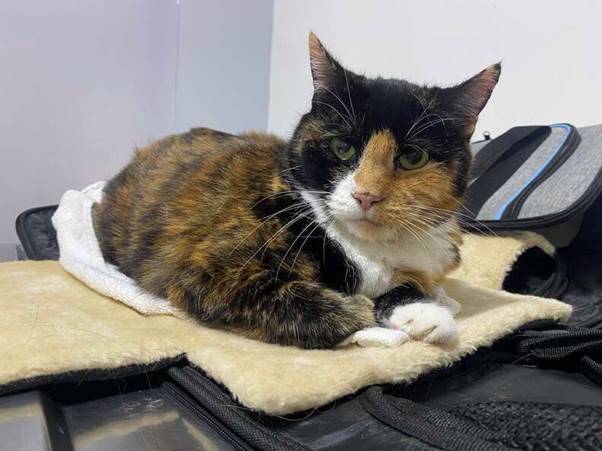
Gearing Up for the Grand Adventure
Once you have the green light from your vet, it’s time to gather your equipment. Choosing the right gear is all about creating a small, mobile bubble of comfort and safety for your cat in a world that will feel strange and chaotic to them.
For a road trip, you have a bit more flexibility. A spacious, sturdy carrier with good ventilation is key. You can fill it with your cat’s favorite blankets and toys—familiar scents that will remind them of home and provide a sense of security.
Flying, however, comes with a lot more restrictions. You’ll need a soft-sided carrier that meets your specific airline’s size regulations, which usually means it needs to be small enough to fit under the seat in front of you. Look for a carrier with plenty of mesh for ventilation and, if possible, one with expandable sides. On my flight with my cat Pumpkin, being able to open up the expandable sides once we were at cruising altitude was a game-changer. It gave her the space to stretch out and sleep in her favorite “shrimp” position for most of the flight.
You’ll also want to pack a “go-bag” of essentials for the journey: a portable travel litter box, a small bag of litter, potty pads to line the carrier in case of accidents, pet-friendly wipes, and collapsible food and water bowls. Having these items on hand will make you feel prepared for any situation that might arise.

The Art of the Practice Run
Imagine your cat’s perspective: a strange box (the carrier) appears, they are placed inside it against their will, and then they are subjected to a series of strange and loud noises. It’s a recipe for stress. You can significantly reduce this anxiety by getting your cat familiar with their travel equipment long before the actual travel day.
“Get the carrier out of the closet and keep it visible for at least a few days before your travel,” Dr. Marteney advises. “This lets them get used to it and makes it less stressful to get into it when the time comes.” Turn the carrier into a safe and happy place. Leave it open in the living room, put their favorite treats or blankets inside, and let them explore it on their own terms.
It’s also a great idea to do a few “dry runs” in the car. Put your cat in their carrier, go for a short drive around the block, and then come right back home and reward them with a treat. This helps them understand that not every car ride ends at the vet. For air travel, it’s helpful to practice the security checkpoint procedure at home. You will have to take your cat out of the carrier to walk through the metal detector. Practice holding your cat securely against your chest in a calm environment, so the rushed and chaotic experience at the airport is a little less jarring for both of you.
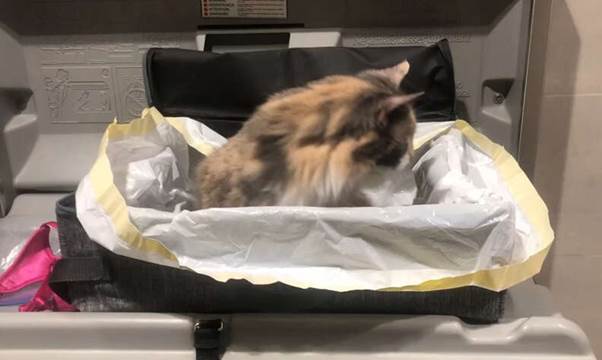
Navigating the Journey Itself
On the day of travel, the goal is to keep your cat as comfortable and calm as possible. To avoid motion sickness, it’s best to remove their food a few hours before you leave, but always offer them water. When I flew with my two cats, Pumpkin and Mia, I had to tailor their feeding schedules to their individual needs. Pumpkin is prone to motion sickness, so I put her food away about six hours before we left. Mia, on the other hand, had a long layover, so I let her eat closer to our departure time and offered her a small snack in the airport.
During the journey, give your cat opportunities to stretch and use the bathroom if possible. On my long trip with Mia, I would take her into the large family bathrooms at the airport, lock the door, and set up her travel litter box on the floor. She was often too nervous to use it, but I felt better knowing she had the chance to feel the familiar texture of litter under her paws.
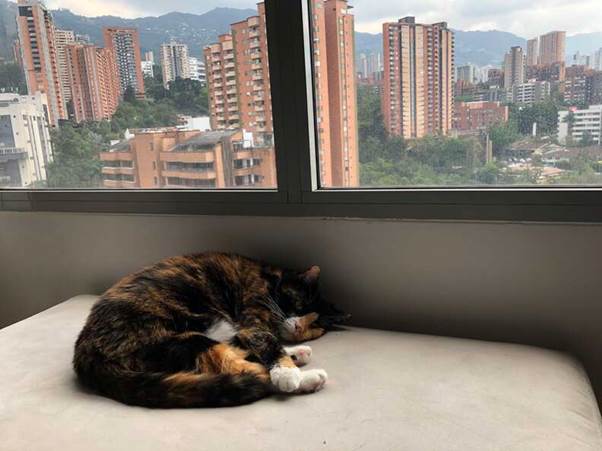
The Reward: A New Home, A Happy Friend
After a long and stressful day of travel, there is no better feeling in the world than arriving at your destination, opening the carrier door, and seeing your cat take their first, tentative steps into their new home. There will be a period of adjustment, of sniffing every corner and finding the best new napping spots, but the relief is immense.
As stressed as they both were during their travels, both Pumpkin and Mia settled into our new home with remarkable speed. After a few days of extra cuddles, their favorite treats, and finding the best sunbeams, they were back to their usual, quirky selves. Seeing them happy, safe, and, most importantly, with me, made every single moment of stress and planning completely worth it. I am so glad I chose to bring them with me.

